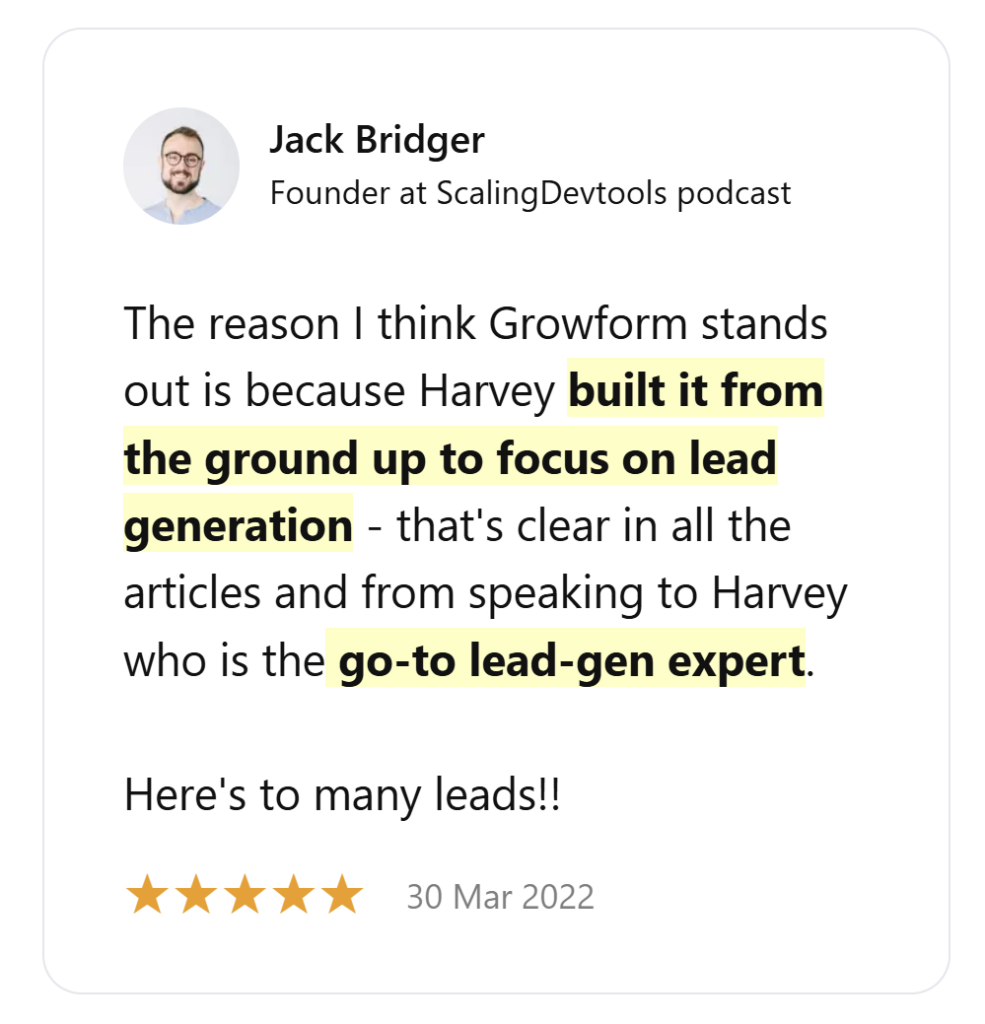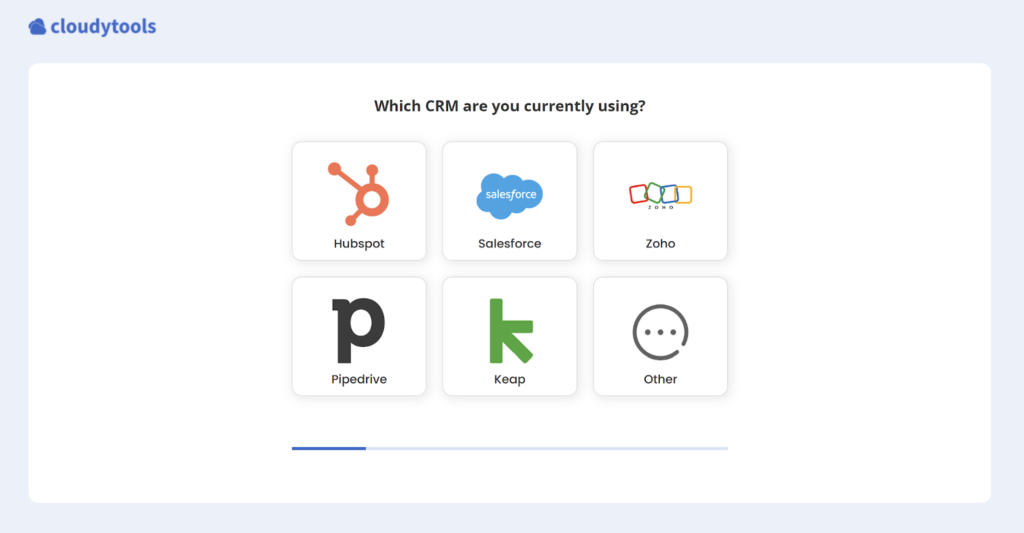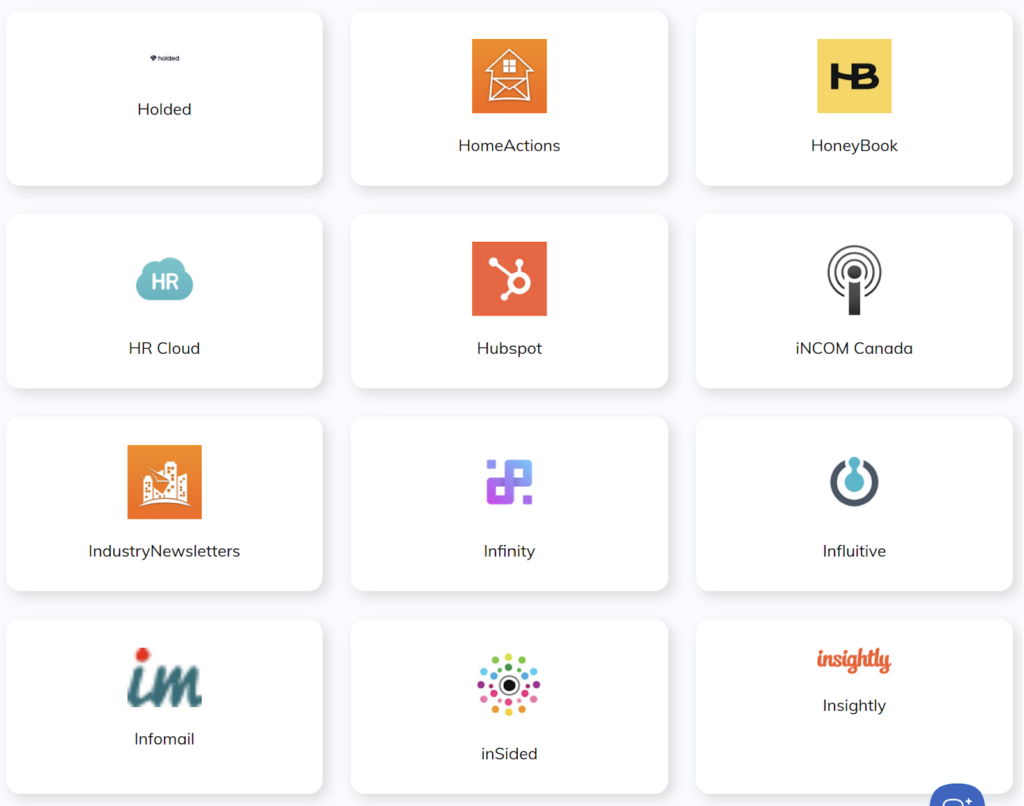Quick Summary
This guide explains how to build a lead scoring system from the ground up, covering everything from choosing the right model to assigning point values and refining over time. If you’re tightening your sales funnel or improving lead handoffs, this step-by-step approach will help you score leads more effectively and close deals faster. For more insights on lead generation and scoring strategies, visit the Growform blog.
Boost Your B2B Sales with an Effective Lead Scoring System
B2B businesses want to reach more potential customers. While that’s a great goal, it also means the possibility of reaching the wrong businesses as potential customers. But this is avoidable with lead scoring.
B2B lead scoring takes the guesswork out of following up on prospects. By scoring leads, your marketing team can focus energy where it matters and win more deals. But how do you get started?
In this Growform guide, we show you step-by-step how to build a lead scoring system that actually works.
Why Listen to Us?
At Growform, we provide a platform that helps B2B businesses build forms that convert. With tools like multi-step forms, conditional logic, and easy integrations, we help teams attract and qualify better leads, leading to higher conversion rates. This guide shares the practical insights we have gained from working with businesses to improve lead quality and performance.

What is B2B Lead Scoring?
B2B lead scoring is the process of ranking leads based on their likelihood of becoming customers. It helps sales and marketing teams focus on the right prospects by using a score that reflects fit and intent.

Scores are typically based on a combination of firmographic data, behavior, and engagement. This includes factors like company size, job title, page visits, and form submissions. A well-built lead scoring model improves efficiency and shortens the sales cycle.
To build that model, it helps to understand the two types of lead scoring inputs:
- Explicit lead scoring uses details the lead gives directly, such as job title, company size, or budget. These data points tell you if the lead fits your ideal customer profile.
- Implicit lead scoring tracks how a lead behaves, like visiting pricing pages or opening emails. These actions suggest how interested or ready a lead might be to buy.
A strong B2B lead scoring model combines both to assess lead quality accurately.
Why is Lead Scoring B2B Important?
B2B lead scoring creates a structure for teams to qualify and prioritize leads. Here are the key reasons why it matters:
- Increased Sales Focus: Sales teams spend less time on cold leads and more time with prospects ready to buy.
- Smarter Marketing Campaigns: Knowing which leads are engaged helps marketers create more relevant campaigns that drive action.
- Stronger Team Alignment: A shared scoring system keeps sales and marketing on the same page regarding lead quality.
- Higher Conversion Rates: Prioritizing top-scoring leads to better win rates and faster deal cycles.
- Clearer Forecasting: Lead scores help predict future revenue and guide decisions around budget and resources.
How to Score B2B Leads Effectively
Step 1: Define Your Ideal Customer Profile (ICP)
Lead scoring only works if you know who you’re trying to attract. That means building an Ideal Customer Profile based on your best current customers, not assumptions or vague metrics.
Focus on objective traits that consistently show up in deals you’ve already closed. You’re looking for patterns, not one-offs. Skip vanity metrics and go straight to what your sales data proves.
Here’s what to zero in on:
- Company size or revenue range
- Industry or niche market
- Typical decision maker roles
- Buying cycle length and deal size
- Technologies already in use
Use your ICP to filter out weak leads early and keep your scoring model focused. Once defined, the profile must be shared across teams. Marketing should target it, and sales should qualify against it.
Every strong scoring model starts here. If the fit is wrong, the score doesn’t matter.
Step 2: Choose a Scoring Model and Connect It to Form Data
With your ICP in place, decide how you’ll score leads. Your scoring model is the structure that determines which signals matter and how they’re weighted. This step is important to the success of your lead scoring efforts.
Common B2B lead scoring models to choose from include:
- Firmographic Scoring: Score based on traits like industry, size, and job title. Best if your ICP is clearly defined and drives deal quality.
- Behavioral Scoring: Use actions such as form completions, email clicks, and page visits to gauge intent. This works well when marketing generates consistent activity.
- Purchase Intent Scoring: Prioritize leads based on high-intent signals, like viewing pricing pages or requesting demos. This approach is a strong fit for short sales cycles.
- Predictive Scoring: Uses machine learning to identify patterns in past conversions. It is best for teams with enough data to support it.
Each lead scoring model example fits a different sales motion, so choose based on your goals, tech stack, and how your team qualifies leads.
That said, all the models rely on reliable inputs. If you’re using Growform, you can capture firmographic and intent signals directly through multi-step forms and hidden fields. These map cleanly to your scoring logic.

Step 3: Define Scoring Criteria and Assign Values
Once you have a model, you need to decide what to score and how much each item is worth. The goal here is to separate high-quality leads from low-intent ones using simple rules.
Identify Intent Signals
Start with clear signals that show fit or interest. These might include:
- Job titles that match your buyer
- Company size in your target range
- Pages visited, such as pricing or case studies
- Specific answers on your form
These are just a few lead scoring examples that can help you separate high-quality leads from low-intent ones early in the funnel.
Assign Point Values
Next, assign point values based on how closely each signal matches your ICP or how strongly it suggests purchase intent:
- High-Impact Actions: Assign more points to behaviors closely linked to conversions, like direct inquiries.
- Moderate-Impact Actions: Allocate fewer points to early-stage engagements, such as newsletter sign-ups.
High-value actions should get more weight than surface-level engagement. However, you can also implement negative points for indicators that reduce the chances of conversion. For example:
- Unsubscribing from Communications: Suggests declining interest.
- Inconsistent Engagement: Long periods of inactivity may indicate a lack of intent.
- Use of Personal Email: Suggests non-readiness.
Growform can support this by helping you structure questions and track actions that map directly to scoring inputs. You can also set conditions that guide higher intent leads down specific paths.
TIP: Keep your rules simple and easy to maintain. Complex scoring often creates confusion instead of clarity.
Step 4: Automate Scoring Through Your CRM or Marketing Tools
Manual scoring does not scale. Once you’ve set your rules, use automation to apply them consistently. Most CRM and marketing platforms support this through workflows or built-in lead scoring features.
Map your form fields to CRM properties. For example, when a lead submits their details via a form, your platform should assign scores based on the data collected. For example:
- +10 for selecting a high budget range
- +8 for choosing a target job title
- –5 for using a free or personal email address
- –3 for inconsistent engagement
In addition, thresholds that move leads into different stages must be defined. For example, push leads with scores over 75 into a “sales-ready” status. This triggers faster handoffs and reduces lead decay.
Lead scoring software like HubSpot, Salesforce, or ActiveCampaign allows you to automate rules, score leads in real time, and move them into lifecycle stages.

Growform integrates with these tools and others. This means the data you collect is immediately available for scoring without manual effort.
TIP: Before you go live, walk your team through how scoring works. Show them how to find scores, interpret them, and respond based on priority.
Step 5: Review and Adjust Your Scoring System Regularly
Lead scoring is not a one-time setup. Your scoring rules should keep up as your product, market, or sales process changes. Here’s how you can improve:
- Check performance data often. Look at how many high-scoring leads convert, how quickly they move through the funnel, and where they drop off.
- Talk to your sales team. They can tell you if high-scoring leads are actually closing or if the model needs to be adjusted.
- Update point values, add new criteria, or remove signals that no longer matter. A small change in scoring can improve how your team spends its time.
Growform’s upcoming form analytics will help you see which fields and steps people drop off at. Use that insight to refine both the form and the scoring tied to it.
A scoring model only works if it reflects reality. Keep it updated, and it will continue to deliver value.
Best Practices for Smarter Lead Scoring
- Align Sales and Marketing Teams Effective lead scoring depends on collaboration between your sales and marketing teams. Regular feedback from both teams helps refine your lead scoring model to ensure it’s in line with actual sales outcomes. Marketing should provide insight into lead engagement patterns, while sales can offer feedback on the quality of leads and conversion rates.
- Incorporate Third-Party Intent Data Enhance your scoring by integrating third-party intent data that tracks buyer behavior beyond your website. By using tools that analyze a lead’s activity across the web, you can score leads based on external signals such as browsing competitors’ sites or reading industry-related content. This provides a clearer picture of a lead’s purchase intent.
- Apply Scoring Decay for Inactive Leads Over time, leads that stop engaging with your content or marketing materials lose relevance. To keep your pipeline accurate and up-to-date, apply a “decay” strategy, where you reduce the score of inactive leads. This will ensure that your team focuses on leads that are still engaged and ready to convert.
- Focus on Actionable Scoring Criteria When developing your lead scoring model, ensure that each criterion you use has a clear, actionable outcome. Avoid scoring based on data points that don’t directly help sales teams prioritize leads or take action. The goal is to make each score lead to a decision or next step, such as a follow-up email or a move into the next stage of your sales process.
- Standardize Your Data Collection Consistency in data collection is crucial for effective lead scoring. Use tools that standardize the information you collect across all leads, such as multi-step forms, consistent field types, and integrations with your CRM. This ensures that all data inputs are structured properly and that your scoring system can be applied consistently across your lead pool.
- Review and Refine Your Scoring Model Regularly Lead scoring is not a set-it-and-forget-it process. To keep your lead scoring system effective, review and adjust your scoring criteria regularly. Track the performance of high-scoring leads and make sure they convert at the rates you expect. Be prepared to refine your scoring model based on changes in your product, sales cycle, or market trends.
Better Inputs, Better Scoring with Growform
By ranking leads based on fit and intent, lead scoring helps you focus on the right prospects. When built around clear criteria and consistent data, it improves how your team qualifies and prioritizes leads.
That starts with better inputs, and that’s where Growform fits in. Growform makes it easy for your team to capture structured, high-quality lead data through multi-step forms, conditional logic, and native integrations.
It fits seamlessly into your workflow and gives your scoring model the information it needs to work from the start.
Sign up today to enjoy a 14-day free trial.
